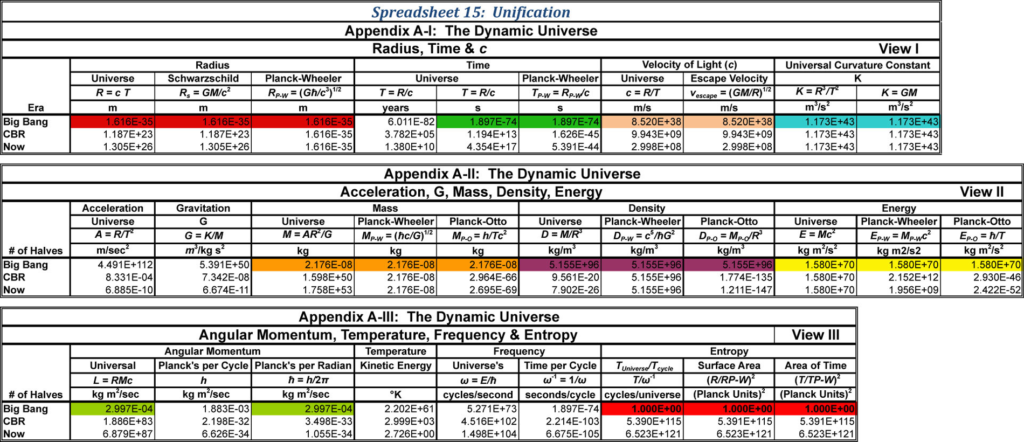Download this chapter for offline viewing (no videos, 3MB)
Download this chapter for offline viewing (includes video content, 36MB)
The factors of the Universal Black Hole existed at their extrema quantities at the Big Bang. All was unified. After that first event dispersion caused the Universe to become the diverse experience it is today. This unification at the Universe’s first moment gives the Occam’s Razor formulations so much of its credibility.
Radius
The Universe’s radius equaled Planck-Wheeler’s radius at the Big Bang.
Universe Radius:

Schwarzschild Radius:
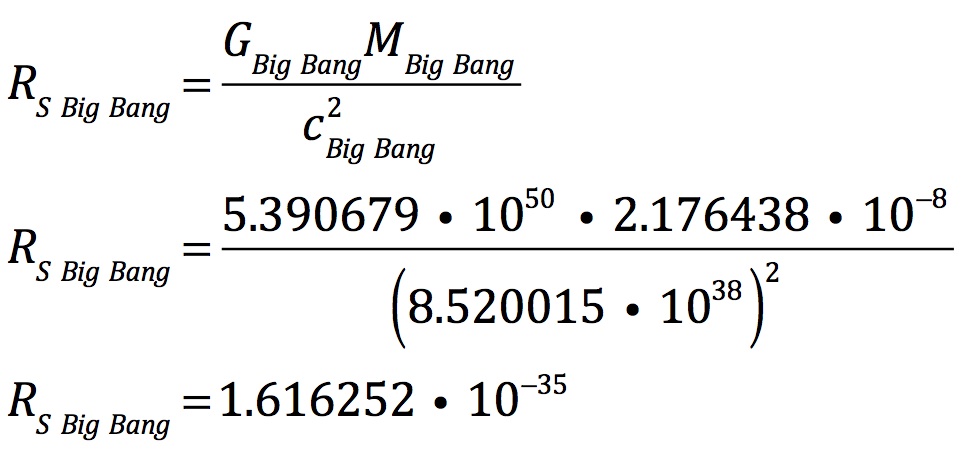
Planck-Wheeler Radius:

Radius
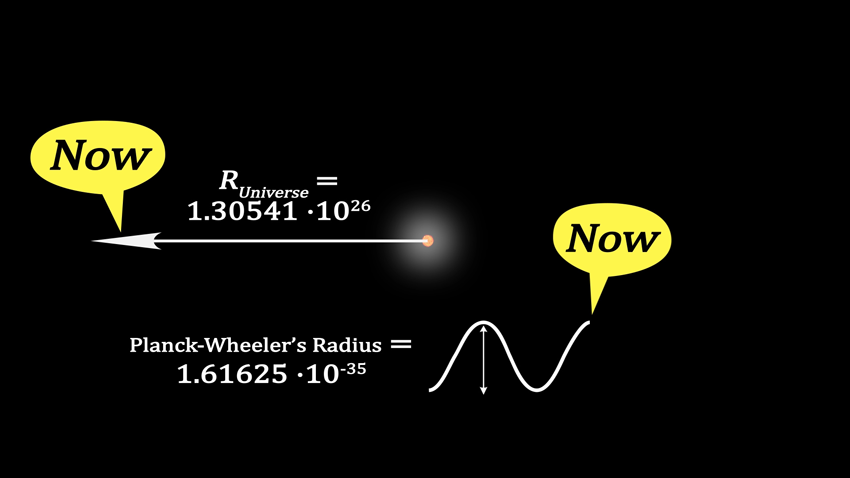
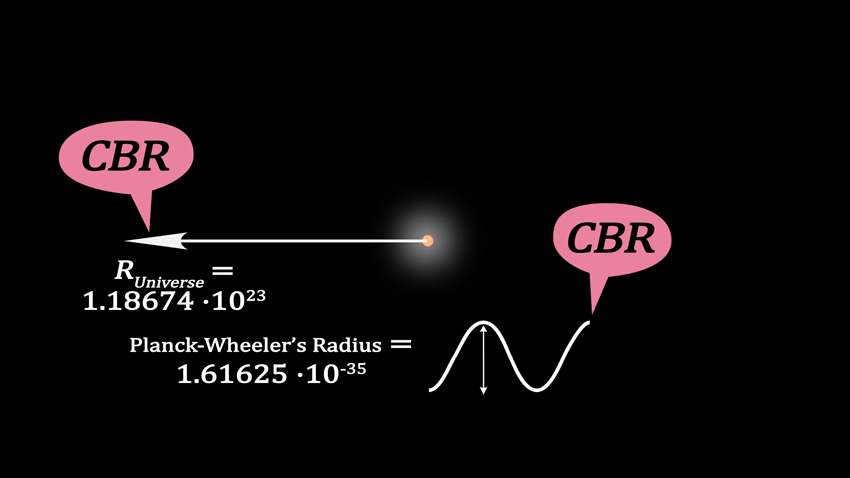
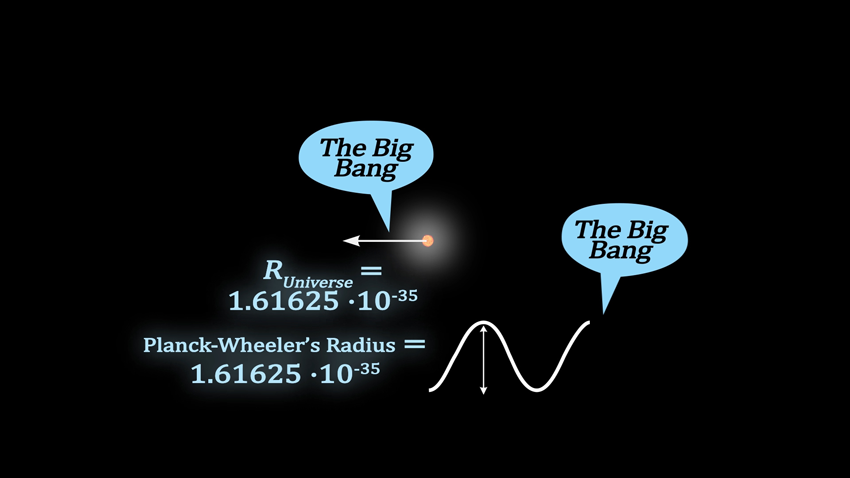
Time
The Universe’s time equaled Planck-Wheeler’s time at the Big Bang.
Universe Time:
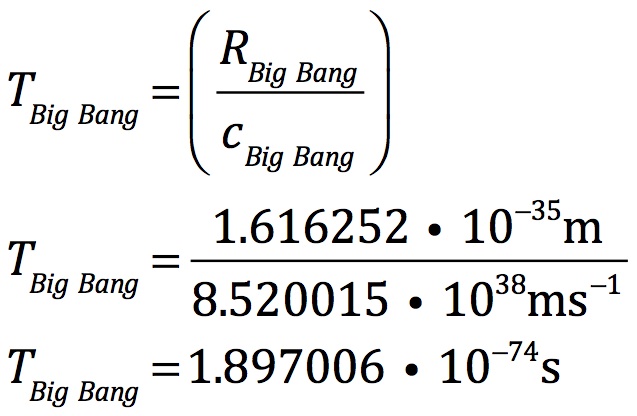
Planck-Wheeler Time:
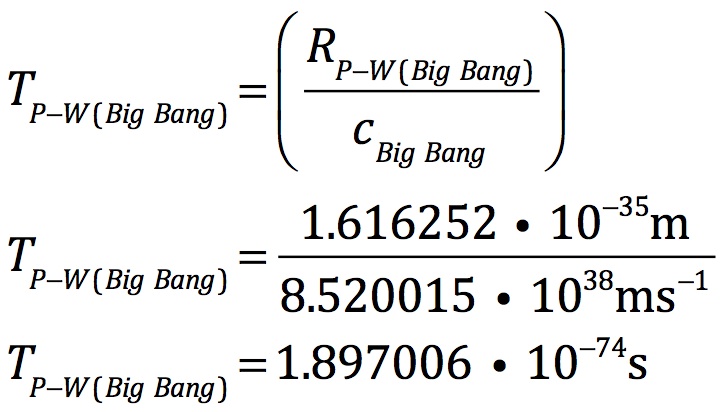
Time
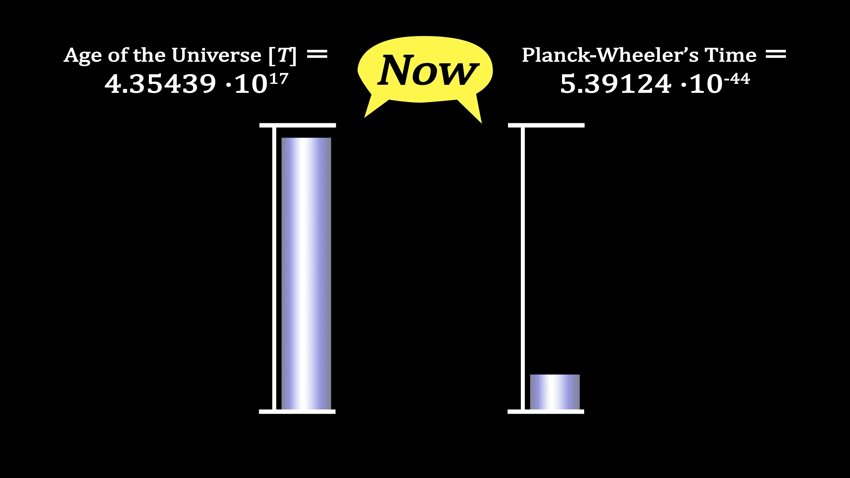

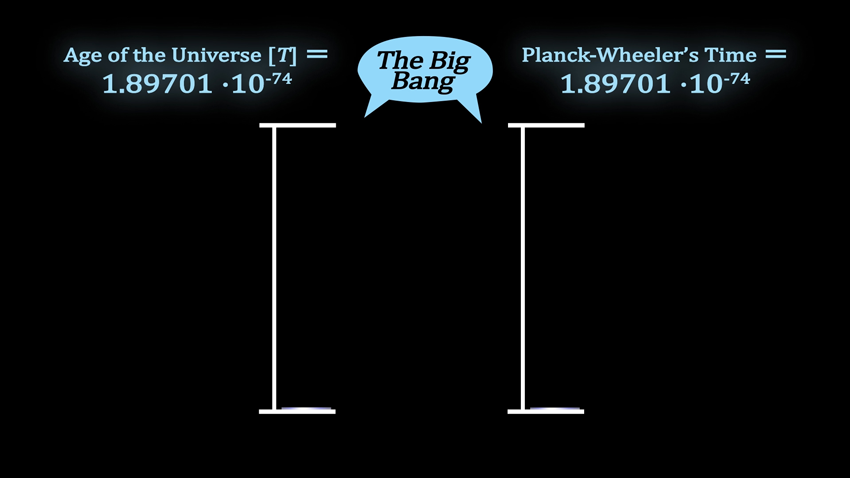
Velocity of Light
At the Big Bang, as throughout history, the velocity of light equaled the exact escape velocity for the Universe.
c:
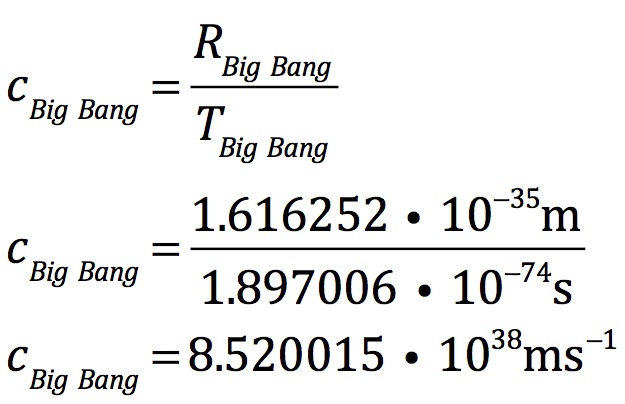
Escape Velocity:
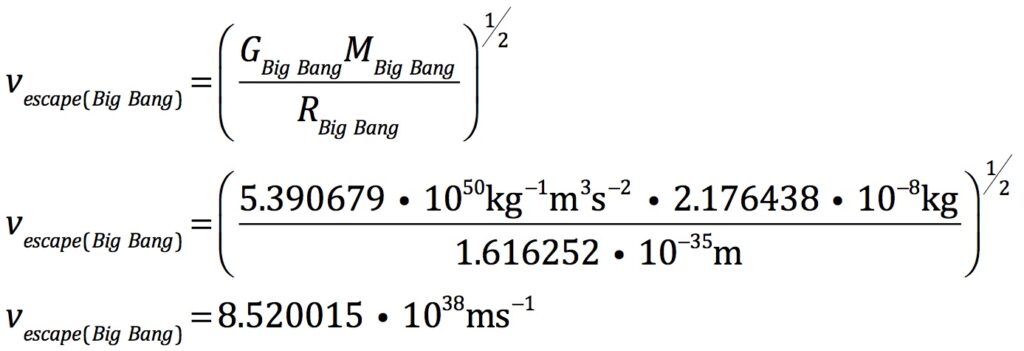
Kepler-Otto Universal Curvature Constant:
As at all points in the Universe’s history, the spacetime and the gravitational calculations of the Kepler-Otto universal curvature constant were equivalent.
Spacetime Constant:

Gravitational Constant:

Mass
The three measures of mass were all equivalent at the Big Bang.
Universal Mass:
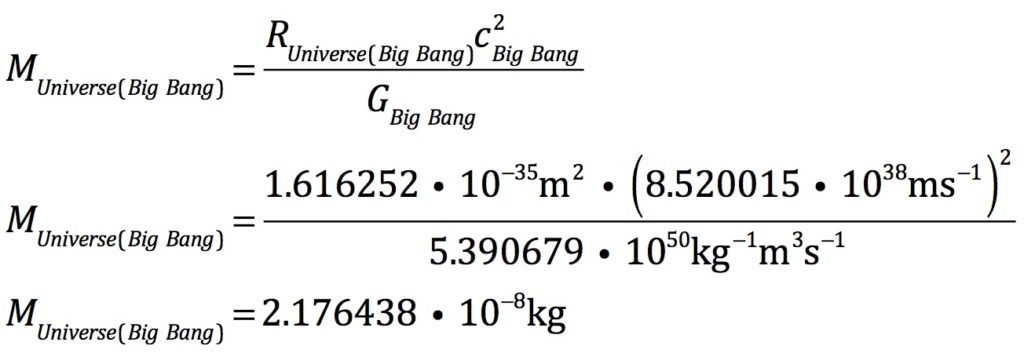
Planck-Wheeler Mass:

Planck-Otto Mass:
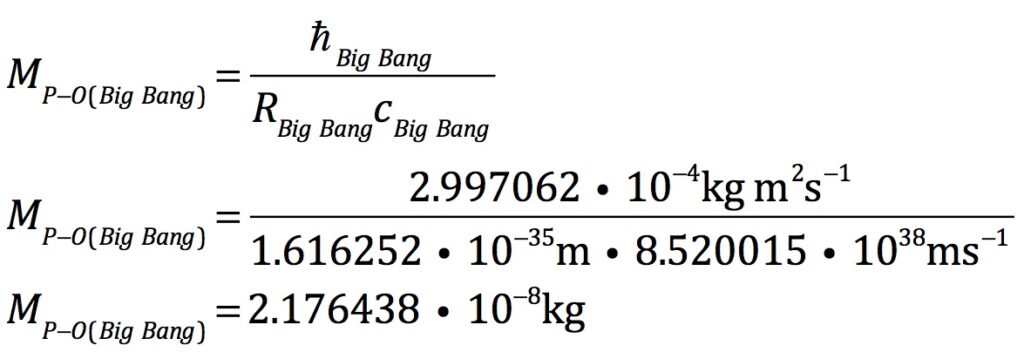
Mass


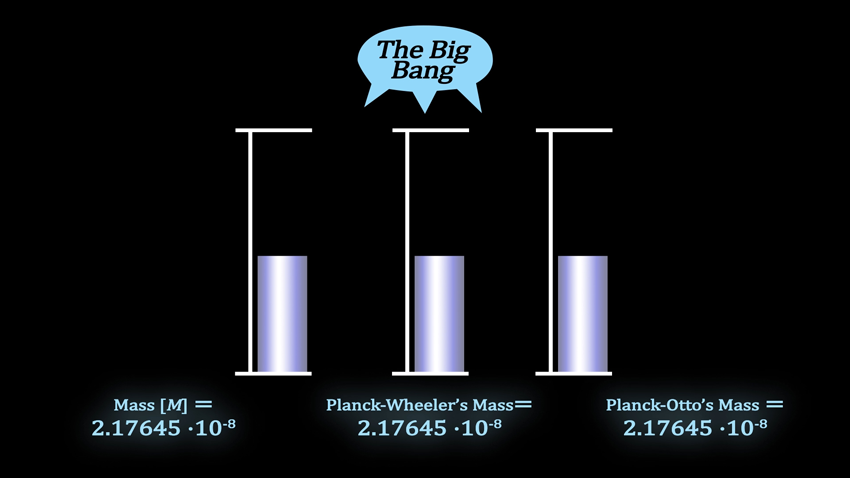
Density
At the Big Bang the density of the Universe equaled Planck-Wheeler’s density.
Universe’s Density:
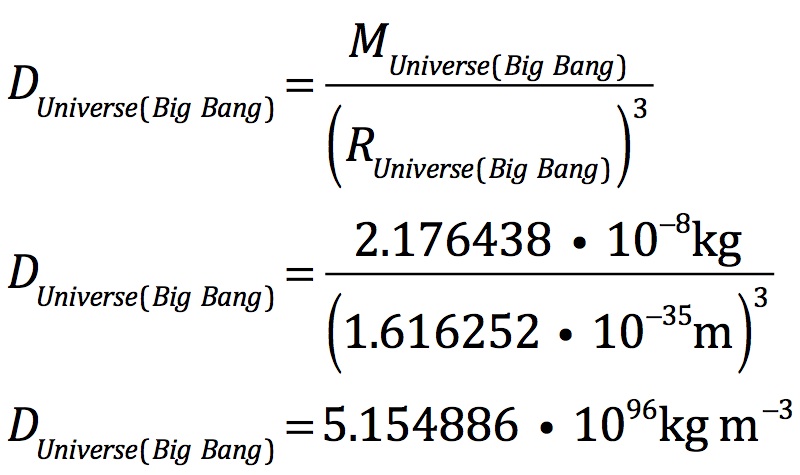
Planck-Wheeler’s Density:

Density

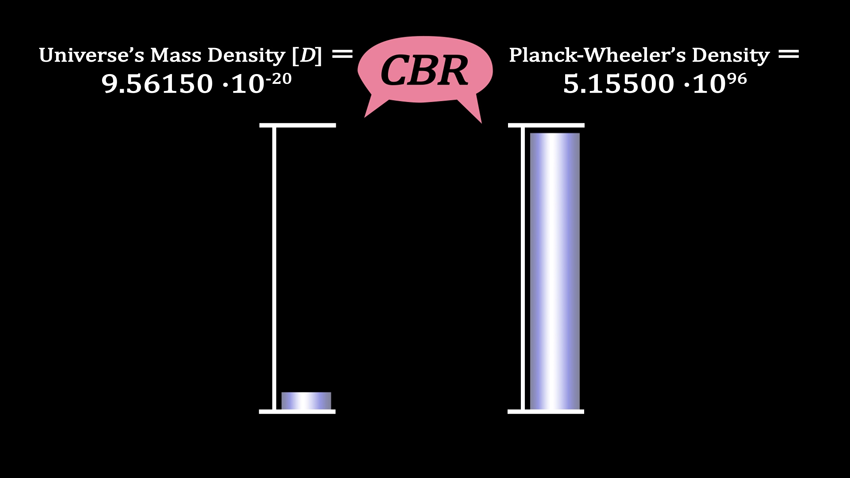
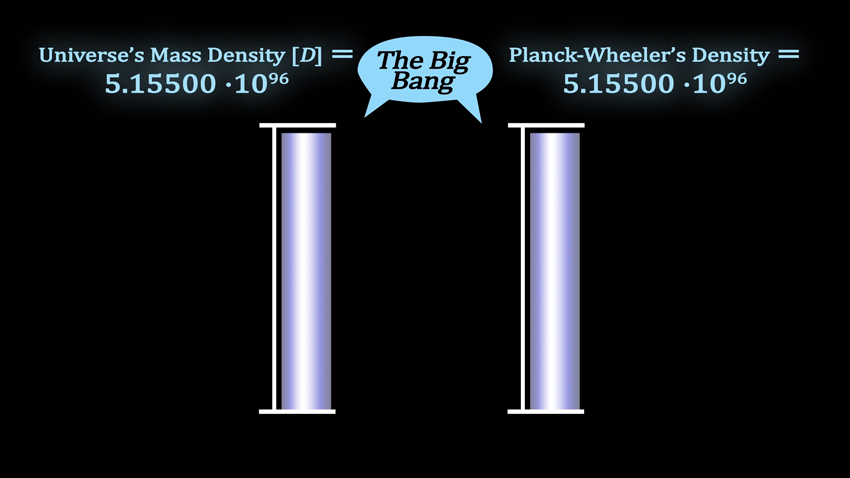
Energy
The three energy factors of the Universe were all equal during the Big Bang.
Universe’s Energy:

Planck-Wheeler’s Energy:

Planck-Otto’s Energy:

Energy

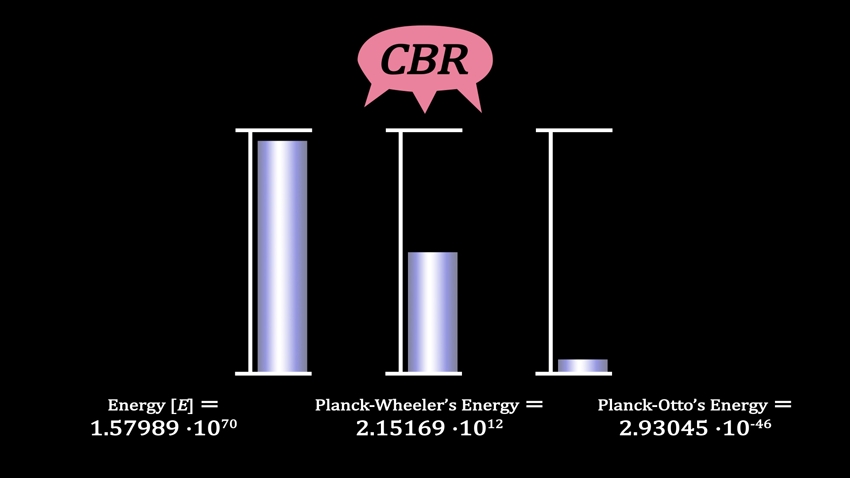
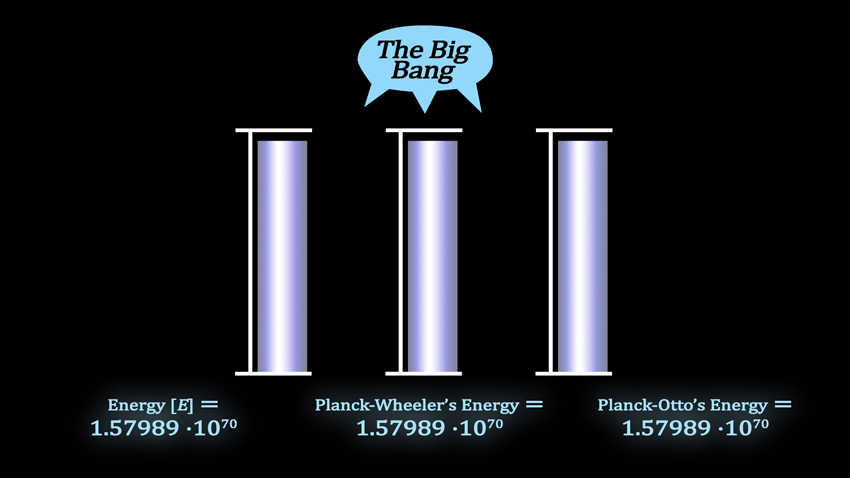
Angular Momentum
The Universe’s angular momentum and Planck’s angular momentum were equal at the Big Bang.
Universe’s Angular Momentum:
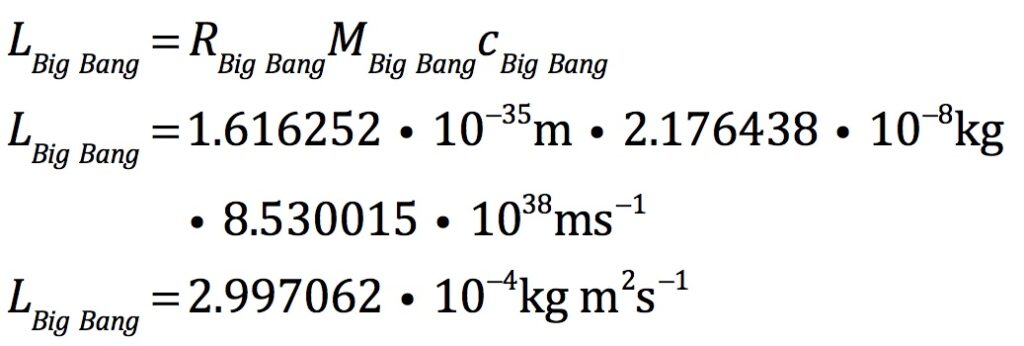
Planck’s Angular Momentum:

Angular Momentum
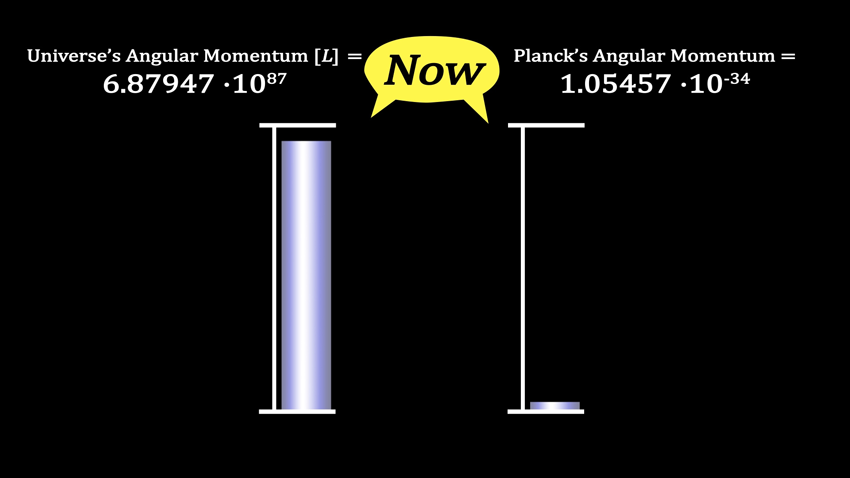
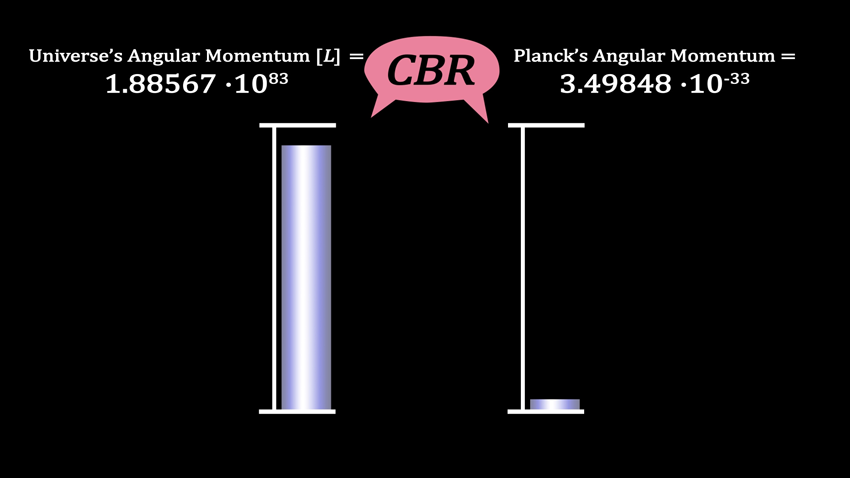

Universe’s Frequency
The frequency of the cosmos is based upon the Universe’s total event creation. This rate is the heartbeat of the growing Universal Black Hole.
Event Frequency:

Entropy
Under the Universal Black Hole model entropy for the Universe can be measured exactly. The Big Bang shows itself when the entropy of the cosmos was one. At the same moment the surface area was one Planck-Wheeler area.
Event Entropy:

Planck-Wheeler Surface Area Entropy:
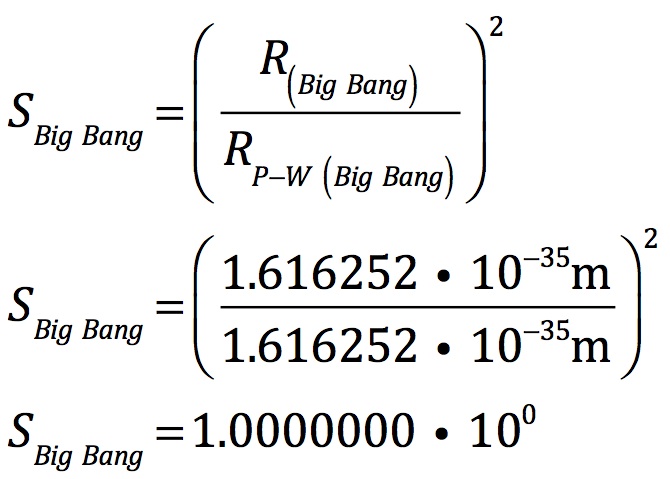
Unification
When the Universe’s radius is cut in half for 202.329469427 iterations, the factors for the Universe unite with Planck’s extrema quantities. This is the most supportive argument for the Universal Black Hole model. No other set of formulations that explain the Universe can achieve this result. This simple set of formulas based upon various ratios of the geometry of the Universe’s black hole explains much of what is observed in the cosmos.
